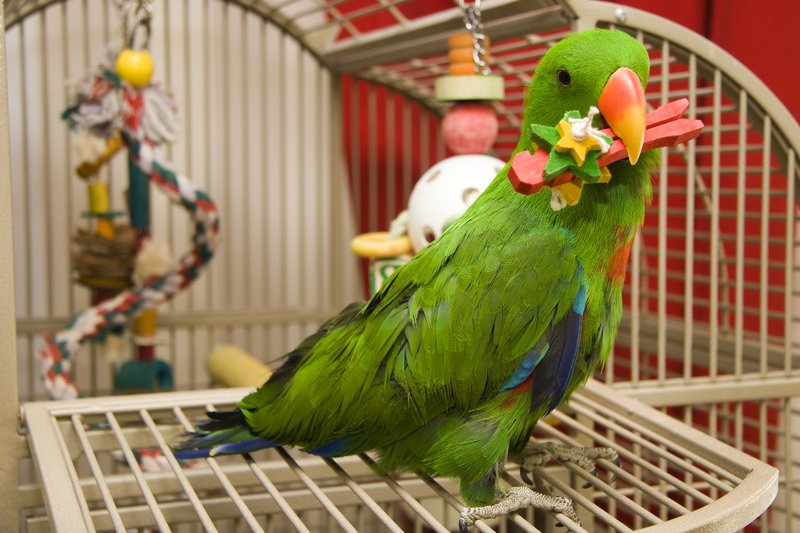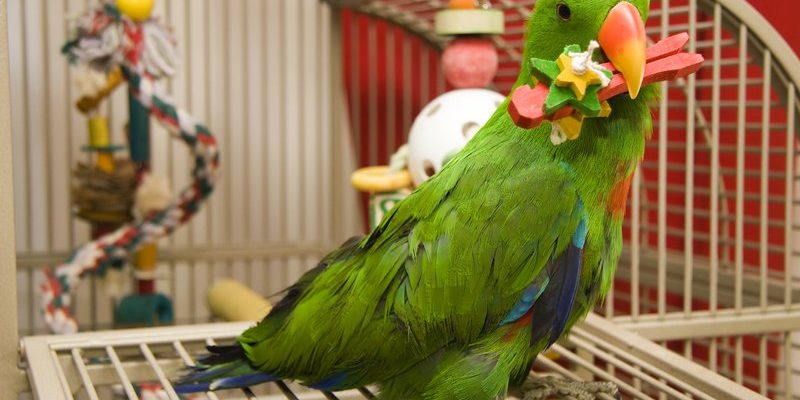
If you’re a parrot owner (or considering becoming one), it’s helpful to understand some common behavioral problems and how to tackle them. From excessive squawking to biting, there’s a lot to unpack. Let’s dive into these issues, break them down, and offer some solutions that can help restore peace at home.
Understanding Excessive Squawking
One of the most common problems parrot owners face is excessive squawking. Parrots are naturally vocal creatures, but sometimes their chatter can reach ear-piercing levels. You might be wondering why your feathered friend has decided to wind up the volume. Well, parrots often squawk as a way of expressing their feelings—whether they’re bored, anxious, or trying to get your attention.
Imagine being in a crowded room—if no one is listening, you might start shouting just to be heard! It’s a bit like that for parrots. They use squawking to communicate, and if they feel ignored, guess what? The volume goes up! So, how can you rein in that noise?
1. Engage in Interactive Play: Spend quality time with your parrot, introducing toys or games that require their participation.
2. Routine and Environment: Establish a daily routine that includes social interaction and mental stimulation.
3. Positive Reinforcement: Reward quiet behavior with treats or praise, helping them associate calmness with positive outcomes.
By addressing their needs, you’ll not only reduce the squawking but also deepen your bond with your parrot.
Addressing Biting Behavior
Biting can be another frustrating behavior in parrots, especially for first-time owners. It’s important to remember that biting is often a form of communication. Your parrot might feel threatened, scared, or simply want to set boundaries—sort of like a toddler who’s had enough playtime.
So, how can you respond to this behavior? Here are some strategies:
1. Understand Triggers: Pay attention to what causes your parrot to bite. Is it a specific person, a loud noise, or perhaps a sudden movement? Recognizing these triggers can help you avoid provoking them.
2. Use Gentle Handling: When interacting with your bird, ensure your movements are slow and gentle. Sudden actions can frighten them and lead to defensive biting.
3. Create Safe Spaces: Allow your parrot to have a designated area where they feel secure. This can help reduce anxiety and biting incidents.
By understanding your parrot’s body language and respecting their space, you can minimize biting and foster a more trusting relationship.
Dealing with Feather Plucking
Feather plucking can be a distressing behavior, and it often signals that something’s amiss. If your parrot is pulling out its feathers, it might be due to stress, boredom, or even health issues—sort of like a person biting their nails when anxious.
Here’s how you can tackle feather plucking:
1. Identify Stressors: Look for changes in the environment. New pets, loud noises, or changes in routine can all contribute to stress.
2. Enhance Enrichment: Provide a variety of toys to keep your parrot mentally stimulated. Rotate the toys regularly to keep their interest piqued.
3. Consult a Vet: If the behavior persists, it’s wise to consult an avian veterinarian to rule out any underlying health problems.
By addressing the emotional and physical needs of your parrot, you can help them feel more secure and reduce the urge to pluck.
Combatting Stereotypical Behaviors
Stereotypical behaviors—like pacing, swaying, or repeated movements—are often signs that your parrot is feeling stressed or bored. It’s like watching someone do a nervous dance in a waiting room. These behaviors can be concerning, but the good news is that they can be improved with some effort.
To combat these behaviors:
1. Increase Interaction: Make it a point to spend time with your parrot. Playtime, talking, or even just sitting together can make a big difference.
2. Provide Challenge: Introduce toys that encourage problem-solving. This can include puzzles or foraging toys that stimulate their minds.
3. Environmental Changes: Adjust their living space with new perches, swings, or climbing structures to encourage exploration.
With patience and creativity, you can break the cycle of stereotypical behavior and bring joy back to your parrot’s life.
Managing Territorial Aggression
Territorial aggression is another behavior that can catch owners off guard. If your parrot has particular toys, perches, or areas it guards fiercely, this is a classic sign of territorial behavior. Think of it like a cat scratching at its favorite spot—it’s theirs, and they’re not letting go!
To curb this aggression, try these tips:
1. Gradual Introductions: If you’re introducing a new toy or another pet, do it slowly. Give your parrot time to adjust without feeling threatened.
2. Set Boundaries: If your parrot is aggressive towards you when you approach its cage, give it space rather than confronting it directly.
3. Training Sessions: Utilize positive reinforcement training to encourage friendly behavior around their territory.
By acknowledging their feelings and providing structure, you can help your parrot feel more secure and lessen their need to defend their turf.
Helping with Separation Anxiety
Many parrots struggle with separation anxiety, which can lead to distressing behaviors like screaming or destructive chewing when they’re left alone. It’s like a child throwing a tantrum when left at daycare. The good news is that there are several approaches you can take to help your parrot cope.
Here’s what you can do:
1. Gradual Departures: Practice leaving your parrot alone for short periods and gradually extend the time. This allows them to adjust without becoming too anxious.
2. Create a Comfortable Space: Ensure your parrot has a cozy environment with toys and activities to keep them occupied while you’re gone.
3. Stay Calm and Positive: When leaving or returning, keep the mood light. Avoid making a big fuss, as this can reinforce anxious behaviors.
By following these steps, you can help your parrot feel more comfortable with their own company, reducing anxiety in the long run.
Living with a parrot can be incredibly rewarding, but it requires patience and understanding. By tackling common behavioral problems—like excessive squawking, biting, feather plucking, and more—you can create a happier, healthier environment for your feathered friend.
Remember, every parrot is unique, and what works for one might not work for another. Take the time to observe and understand your parrot’s needs. The journey may have its ups and downs, but with a little love and persistence, you can foster a deep, meaningful bond with your fluffy companion.

